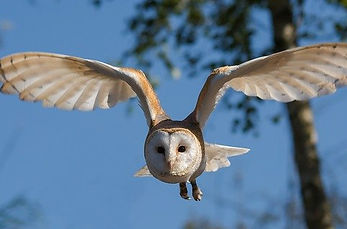
Championing Biodiversity
In our orchard we are planting traditional, vintage, cider apple varieties from the West Country. Kingston Black, Dabinett, Somerset Redstreak and Yarlington Mill were all previously grown on our farm up until the 1970s. Our aim is to replant the orchards, restore biodiversity, support wildlife and weave some beauty back into the landscape. Oh….and also make tasty cider along the way for people to enjoy!
We have adopted an organic approach and do not spray our trees with any chemicals. Grease bands are wrapped around each tree during the winter to prevent winter moths climbing the trees to lay their eggs – thus reducing the threat of caterpillars eating all the leaves in the summer and leaving trees vulnerable to disease. A fishoil based winter wash was applied immediately after leaf fall last year and will be applied again in late March to remove insect and aphids eggs from the trees. We are learning as we go along.

We're attracting predators

We need bees

And more birds
Attracting Predators: To mitigate the threat posed by aphids, efforts are being undertaken to attract more ladybirds and other insect predators. The grass along the edge of each row is left to grow from July onwards to enable the ladybirds to overwinter in the orchard. The grass will be cut back in the Spring. Bug hotels have also been established to boost the populations of ladybirds and other predators overwintering in the orchard. The aim is to have sufficient predators around once the trees come into leaf to eat the aphids when they appear. Last year, aphid attacks on some of our trees destroyed the apple crops and stunted the growth of the trees. Dill, caledular and angelica have all been planted to attract more ladybirds and patches of stinger nettles are also left to create habitats for ladybirds to lay their eggs.
We need Bees: The dramatic decline in bee populations across the UK should be a concern for all of us. For apple growers no bees means no pollination and thus no fruit. Attracting more bees to our orchard is a priority. We are implementing a strategy to ensure there is food for the bees all year round. Pussy Willow, Hazel and Alder have all been planted to provide a source of food in early Spring when there is not much food around for bees, whilst our Mahonia will provide a source of food in January. Wild flower strips will be sown in the spring to provide a range of food sources for bees and the lavender and rosemary planted last summer will offer additional attraction as well as providing a lovely summer aroma around the cabin that we have built. To ensure the bees do not go thirsty, we have dug out an old pond at the top of the orchard – the pond was filled in over 70 years ago!


And we need more birds: birds help to keep orchards healthy by eating pests and we are busy trying to create habitats for blue tits, great tits, robins, woodpeckers and other species – nesting boxes have been set up, fat balls hang from trees to feed birds in winter and the pond has proved to be very popular. We saw our first barn owl in the orchard over the summer and so we must be doing something right….we are assuming that leaving a whole strip of the field to grow wild has provided the owl with a rich source of food – rodents!
Not forgetting the hedgerows: To protect our apple trees from windrock, we are leaving the hedgerow along the south-western edge of the orchard to grow high and planting alder trees within the hedgerow to provide added protection from the wind. Alder trees also put nitrogen back into the soil and provide an important source of food for bees during early Spring. Oaks, hornbeams, beeches and field maple are being planted along the northern and southern perimeter of the orchard to improve biodiversity.




